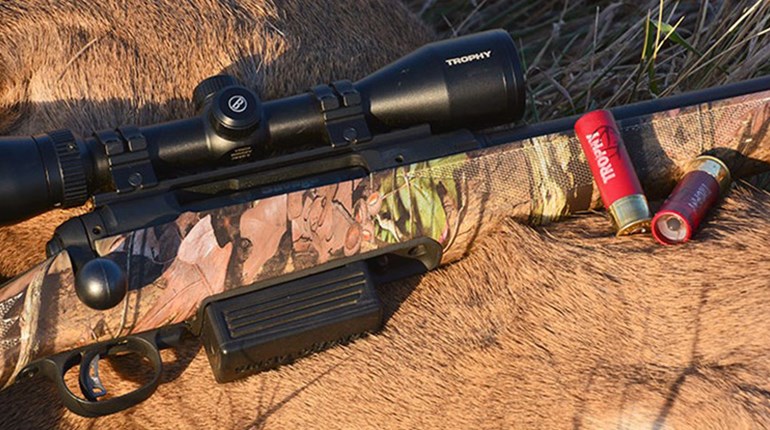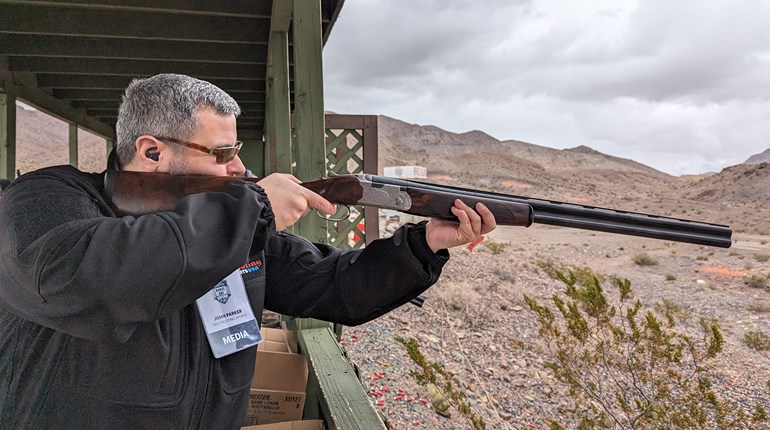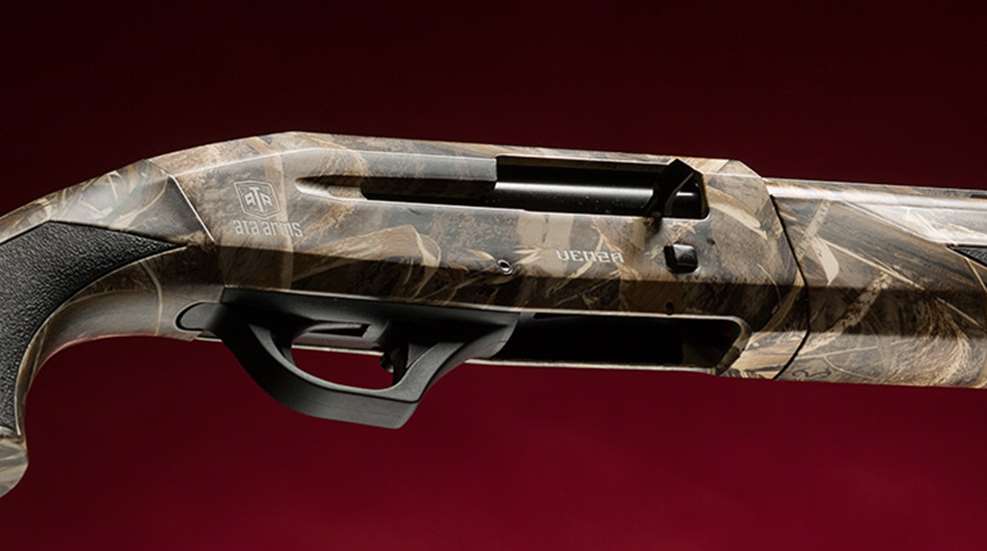
Mossberg. Remington. Weatherby. The Stevens line by Savage Arms. You’ve heard the names before. They’re titans in the firearm industry, they all have American roots and their products are, in most cases, very well regarded. The odds are strong that many of American Hunter’s readers own at least one firearm produced by the companies I’ve listed here. Further, they all offer shotguns, and—most importantly to this discussion—at one point or another they’ve been among the major players to import scatterguns from Turkey.
Though the idea that Turkish-made shotguns aren’t up to snuff remains a common theme in gun shops across the United States, it’s simply not true. If it were the case, companies would have stopped importing them a long time ago. Instead, things are trending the opposite direction—more shotguns than ever are arriving from Western Asia. Lately quite a few have been arriving without a big American name stamped on the barrel. Among the new arrivals is a quirky but intriguing release from ATA Arms in the form of its Venza.
If the ATA Arms name rings a bell, it’s not surprising. Founded in 1997, the company has marketed a small handful of shotgun models—like its CY and NEO lines, among others—to shooters here in the States. More recently, though, its factory has been the one producing much of Weatherby’s shotgun line. The Orion I, the Golden Bullseye Award-winning Element Deluxe—they rolled out the same door as the Venza. So you know you’re dealing with folks who have a handle on how to build a fine shotgun. Rest assured that if Roy Weatherby’s descendants are shopping there, we’re talking about quality.
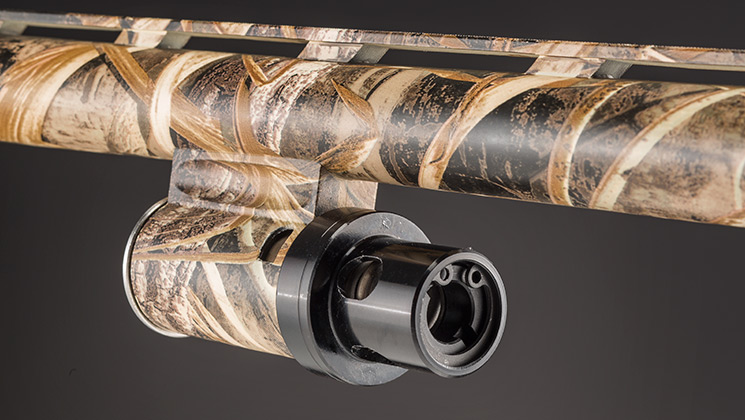
Aesthetically, the Venza looks like any other modern semi-automatic. It has a few nice features I’ll cover in a bit, but what makes it such a unique and interesting entry into the market rests under its proverbial hood. The Venza is powered by what ATA Arms calls a “Gas Pressure Control System,” or GPCS. The patented design is essentially an integration of two operating systems: a short-recoil system and a gas-pressure system.
The Venza operates differently, based on the pressure discharged by the load. It features a barrel that moves backward a fraction of an inch upon firing an appropriately powerful shotshell. With a heavy load, the barrel and other moving parts slide backward, opening carefully placed gas vents near the front of the fore-end. Some of the pressurized gas traveling down the barrel is then funneled through the gas chamber and out those holes. The results, in theory, are a reduction in felt recoil and a decrease in the corresponding barrel jump. When using lighter loads, the barrel doesn’t move. Instead, the propellant gas is forced through the gas chamber, pushes the plunger and moves the bolt backward.
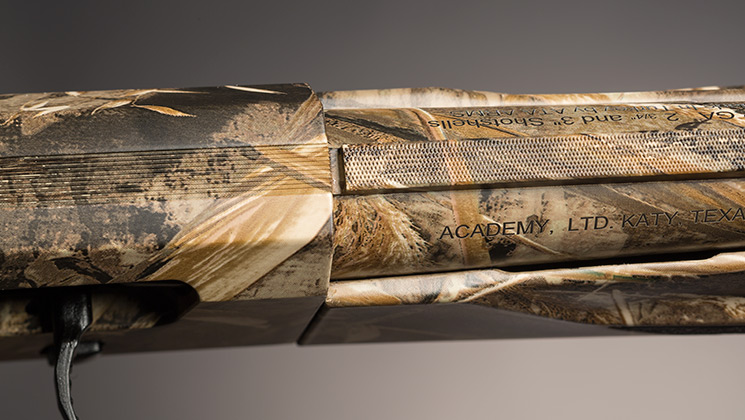
In practice, it was difficult to determine just how effective the GPCS was at reducing recoil. I put the Venza through two individual tests—the first on an indoor range, the second on the trap field. At the range, two other shooters and I test-fired the Venza with an array of popular scattergun loads great and small, from magnum turkey shotshells and heavy predator loads down to 2¾-inch sporting clay rounds. The Venza functioned fairly well and never failed to cycle. The only hiccup we produced came exclusively because we were trying to torture-test the gun: When firing a heavy load with a light load next in the magazine, the Venza ejected the light load along with the hull of the heavy load. Near as we could tell, the operating system simply drove the light load out of the ejection port before the gun could cycle it, essentially causing a double ejection. We produced this phenomenon on only two occasions, and it’s not really a situation that would arise when afield—who’s chasing a magnum shell with a light one?
On the trap line, the Venza handled smoothly. It’s well balanced and swings easily. Unloaded, the gun weighs little more than 7 pounds. I had no trouble busting clays during a few rounds of wobble trap. The reduced recoil claims were harder to quantify. The Venza obviously still has some recoil—we found that its muzzle tended to jump up and to the right—but two of us conceded that it may indeed be a little bit easier to handle than a traditional gas gun. That said, I wouldn’t call the difference extraordinary.
One thing I found noteworthy while testing was the Venza’s carrier latch. Its design is somewhat canted, which allowed me to load the magazine rather easily. Even though the gun was brand new and not at all broken in, I was never at risk of tearing up my thumb while loading it.
Beyond its guts, the Venza is built very much like other shotguns in its class, and I mean that in a good way. Scattergun owners will find nothing out of the ordinary on the gun’s surface, and it’s an attractive package. I tested a Realtree Max-5 synthetic-stocked model with waterfowl hunting in mind, but the gun is available in a bevy of variations, including walnut-stocked models with a variety of metal finishes.
All told, the ATA Arms Venza is exactly what the semi-auto shotgun industry needs to start seeing from Turkish manufacturers—a step forward in innovation. Furthermore, it’s a good-looking, reliable shotgun that’s available at a price near the bottom of the semi-auto market, retailing for about $500. You can’t argue with that.
Technical Specifications:
• Type: short-recoil and gas-operated semi-automatic shotgun
• Gauge/Chamber: 12/3"
• Capacity: 3+1 rds.
• Barrel: 24", 26", 28" (tested), 30"; ventilated top rib; threaded for choke tubes
• Sights: checkered top rib w/front red fiber-optic bead
• Trigger: 6.4-lb. pull weight
• Safety: cross-bolt
• Stock: Soft Touch synthetic; Realtree Max-5 (tested), Realtree Xtra Green, Realtree Advantage Timber, Kryptek Highlander Carbon Fiber; LOP 14"; drop at comb 1.5"; drop at heel 2"
• Metal Finish: Realtree Max-5
• Overall Length: 48.5"
• Weight: 7.3 lbs.
• Accessories: 5 choke tubes (SK, IC, M, IM, F)
• MSRP: $529.99













